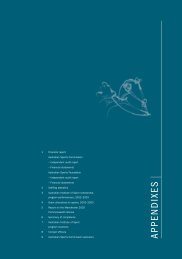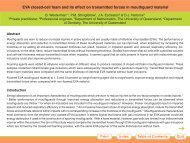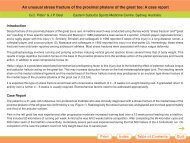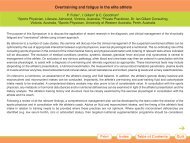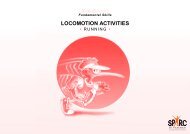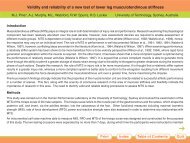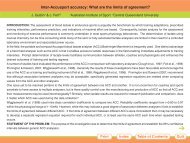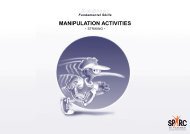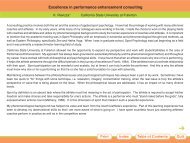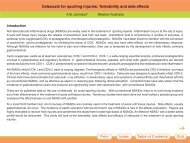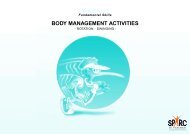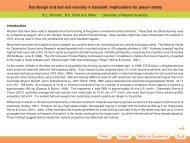Victorian Masters Sport Resource Kit - Australian Sports Commission
Victorian Masters Sport Resource Kit - Australian Sports Commission
Victorian Masters Sport Resource Kit - Australian Sports Commission
Create successful ePaper yourself
Turn your PDF publications into a flip-book with our unique Google optimized e-Paper software.
6. <strong>Masters</strong> <strong>Sport</strong> Participation<br />
Opportunities<br />
6.1 Impacts On Existing<br />
Participation Structures<br />
<strong>Masters</strong> <strong>Sport</strong> does not necessarily mean<br />
creating a separate competition or<br />
participation framework. The emphasis of<br />
<strong>Masters</strong> <strong>Sport</strong> should be to get more people<br />
involved in ways that suit them – if existing<br />
structures, competitions, or activities will<br />
meet these needs – great!<br />
Some sports may not find it appropriate to<br />
create a separate <strong>Masters</strong> element. The<br />
creation of opportunities for <strong>Masters</strong> <strong>Sport</strong><br />
should not adversely affect the overall<br />
participation structures within a sport.<br />
Triathlon is one sport which already provides<br />
for aged based competition and is equally<br />
accessible by people of all ages, so some<br />
sports may find it better just to promote<br />
actively to the <strong>Masters</strong> age group to get them<br />
involved rather than create separate masters<br />
participation frameworks.<br />
Some sports, however, will have to develop<br />
separate participation opportunities due to the<br />
physical elements of the sport – such as<br />
Superrules <strong>Australian</strong> Rules Football.<br />
6.2 Marketing <strong>Masters</strong> <strong>Sport</strong><br />
Participation Opportunities<br />
Organisations marketing an opportunity for<br />
<strong>Masters</strong> age people to participate should<br />
market their individual sport in the usual way<br />
with a few modifications.<br />
Promotion<br />
The potential market for participants in<br />
<strong>Masters</strong> <strong>Sport</strong> can be divided into four<br />
categories:<br />
◗ Current participants who are about to<br />
become eligible,<br />
◗ Current participants who are eligible but<br />
still choose to participate in open age<br />
activities,<br />
◗ Retired participants who have ceased<br />
involvement for a variety of reasons, and<br />
◗ People who are entirely new to the sport.<br />
Each of these groups will require a different<br />
message to get them either continuing their<br />
involvement in the sport, to return to the sport<br />
or to take up a new sport at a later age.<br />
Examining membership records to identify<br />
retired players, promoting directly within the<br />
particular sport’s network, and using higher<br />
profile participants as role models to appeal to<br />
the <strong>Masters</strong> age category are promotional<br />
strategies that have been successful in the past.<br />
If clubs do not have accurate records of current<br />
or past members, often the regional or state<br />
association will be able to assist in this area.<br />
Product<br />
Photo: National <strong>Sport</strong> Information Centre<br />
of the <strong>Australian</strong> <strong>Sport</strong>s <strong>Commission</strong><br />
The <strong>Masters</strong> <strong>Sport</strong> market should not be<br />
treated as a homogenous group of people. The<br />
“product” that various sports have to offer<br />
should be tailored to suit the demands of the<br />
different elements of the <strong>Masters</strong> age group.<br />
35<br />
6. <strong>Masters</strong> <strong>Sport</strong> Participation Opportunities



